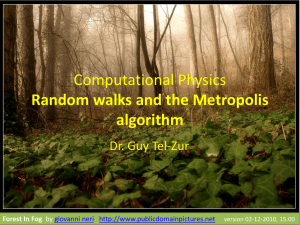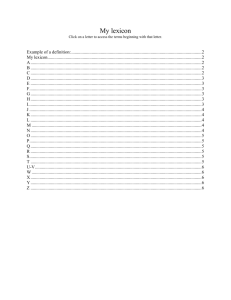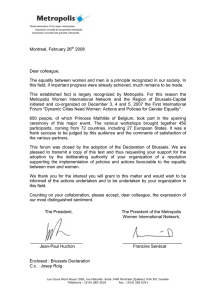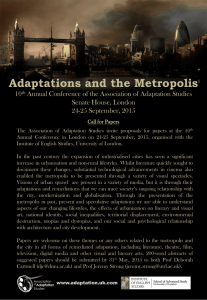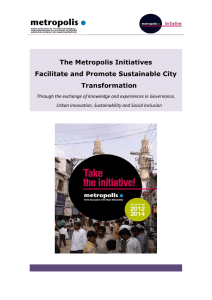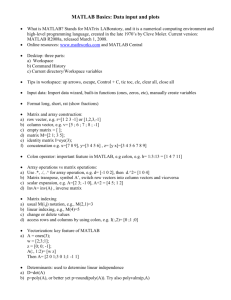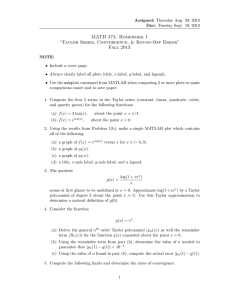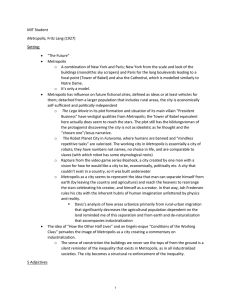Random Walk and the Metropolis Algorithm - Guy Tel-Zur
advertisement
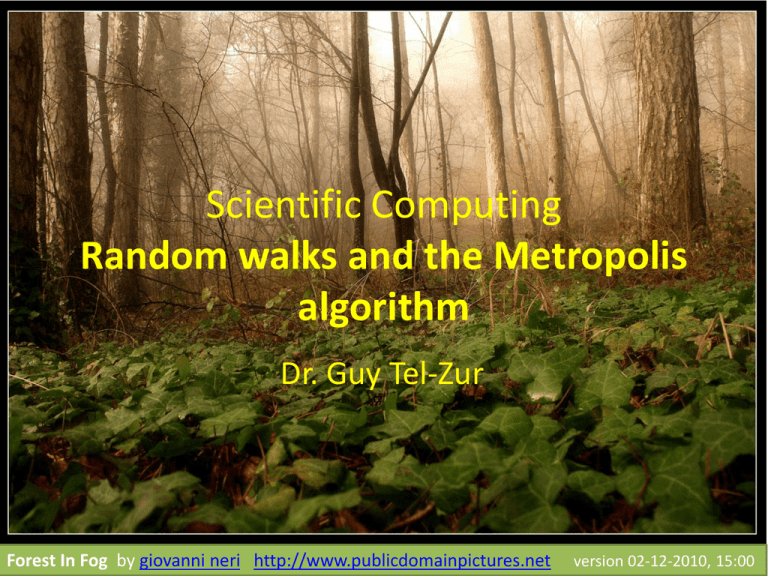
Scientific Computing Random walks and the Metropolis algorithm Dr. Guy Tel-Zur Forest In Fog by giovanni neri http://www.publicdomainpictures.net version 02-12-2010, 15:00 Diffusion Equation j(x, t) = The flux of particles. w(x, t)dx is the probability of finding a given number of particles in an interval of length dx in x ∈ [x, x+dx] at a time t. It is the PDF. This means in turn that <x> is independent of time! This reminds us a random walk in 1D What about the variance of x? Random walks Demo: computer code: Open DevC++ execute a modified “program1.cpp” Matlab: a=load(‘testwalkers.dat’) plot(a(:,1),a(:,2)) plot(a(:,1),a(:,3)) subplot(2,1,1),plot(a(:,1),a(:,2)) subplot(2,1,2),plot(a(:,1),a(:,3)) <X> variance Matlab: p=load(‘probability.dat’) plot(p(:1,),p(:,2)) The Metropolis algorithm and detailed balance The Best of the 20th Century: Editors Name Top 10 Algorithms SIAM News, Volume 33, Number 4 By Barry A. Cipra 1946: John von Neumann, Stan Ulam, and Nick Metropolis, all at the Los Alamos Scientific Laboratory, cook up the Metropolis algorithm, also known as the Monte Carlo method. The Metropolis algorithm aims to obtain approximate solutions to numerical problems with unmanageably many degrees of freedom and to combinatorial problems of factorial size, by mimicking a random process. Given the digital computer’s reputation for deterministic calculation, it’s fitting that one of its earliest applications was the generation of random numbers. קושי לחשב את פונ' החלוקה
